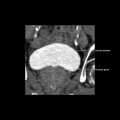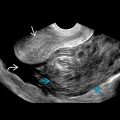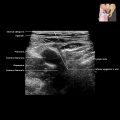KEY FACTS
Terminology
- •
Urinary tract infection by mycobacterium tuberculosis via hematogenous spread from primary focus, usually lungs
Imaging
- •
Depends on stage of disease; may range from caliectasis, abscess, cavities, calcifications, and strictures in urinary tract
- •
Early stage: Normal kidney or small focal cortical lesions with poorly defined border ± calcification
- •
Progressive stage: Papillary destruction with echogenic masses near calyces
- •
Mural thickening ± ureteric and bladder involvement, associated stricture → hydronephrosis
- •
Small, fibrotic, thick-walled bladder
- •
Small, shrunken kidney, “paper-thin” cortex, and dystrophic calcification in collecting system
- •
CECT with CT urogram (CTU) is useful in diagnosing and assessing severity
- •
Heavily calcified caseous mass surrounded by thin parenchymal shell → “putty kidney”
- •
Hydrocalyces or “phantom calyx” (nonopacification of calyx due to infiltration and obliteration) proximal to infundibular stricture
- •
Late stages: Small, poor-functioning, scarred kidneys with dystrophic calcification
- •
CT (CTU) has replaced IVP for diagnosis and to rule out complications (strictures, abscess) and extrarenal manifestation
- •
Ultrasound useful in assessing complications (renal abscess, hydronephrosis)
Top Differential Diagnoses
- •
Papillary necrosis
- •
Pyonephrosis
- •
Xanthogranulomatous pyelonephritis
- •
Cystitis










